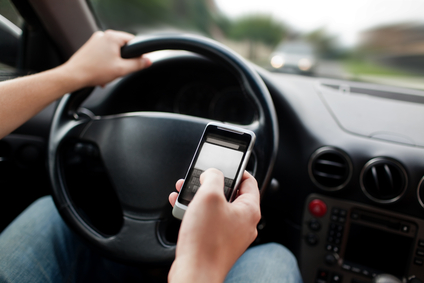New App Aims to Combat Distracted Driving

Texting while driving is a special kind of faux pas, a social no-no usually committed when the perpetrator thinks they are all alone. Like singing ‘My Heart Will Go On’ at the top of your voice, or picking your nose at a red light, it’s amazing how far people will go when sealed inside a metallic cocoon.
Of course, people can see you, and they will judge you. For a transgression as serious as ‘twitting’ (Texting While in Traffic), some people even go as far as publicly shaming the guilty.
It’s hard to feel much sympathy when you look at the distracted driving statistics. According to research report released by the National Highway Traffic Safety Administration (NHTSA) and the Virginia Tech Transportation Institute (VTTI), distracted drivers are the leading cause of car accidents, with 80% of crashes and 65% of near-crashes involving some form of distraction. Anyone who thinks they have time to send a quick response can think again – most distractions occur within three seconds before the accident.
The most at risk group is teenagers, and app developers have responded with all sorts of clever ways to prevent or minimize the effects of distracted driving. The latest to hit the market is Txt Shield, launched this month by two Florida brothers, and aimed squarely at worried parents.
The app puts control in the hands of parents by sending automatic replies to incoming text messages based on how fast the device is moving. It’s available for $1.99 as a Lite Version, which activates as soon as the device is moving above 10mph, but cannot be disabled (if, for example, the teen is travelling as a passenger in someone else’s vehicle). For more flexibility – and a text alert to other pre-set numbers should the app be uninstalled – users must opt for the Gold Version. Still, at $3.99, it’s surely worth it for peace of mind. But how does it compare to similar products on the market? Let’s take a look at the top three distracted driving apps out there…
- At $29.99, Android’s Textecution isn’t cheap. It works in a similar fashion to Txt Shield, preventing the ability to text if a phone is travelling faster than 10mph. Passengers can override the app – though any such requests must be authorized by an administrator, which begs the question: what if the administrator is driving?
- Compatible with most smartphones, tXtBlocker provides a neat customizable option allowing users to set certain routes and times – like the daily commute – when phone calls and texts aren’t accepted. Again, it’s not cheap, costing $6.99 per user per month.
- AT&T’s DriveMode is a winner for the company’s brand image, sending auto-replies for no more than the cost of an ordinary text message. It certainly suggests a caring, safety-first attitude, although in this case, the function doesn’t kick in until the device is moving faster than 25mph, which may not be quite enough peace of mind for some parents.
The slew of distracted driving apps on the market point to a real need for safety awareness among businesses. If you are currently devising a mobile marketing strategy, it’s worth considering the inclusion of an opt-out that only kicks in at certain times. If you can avoid sending a text message while someone is driving to work, it’s another way of keeping customers onside.


